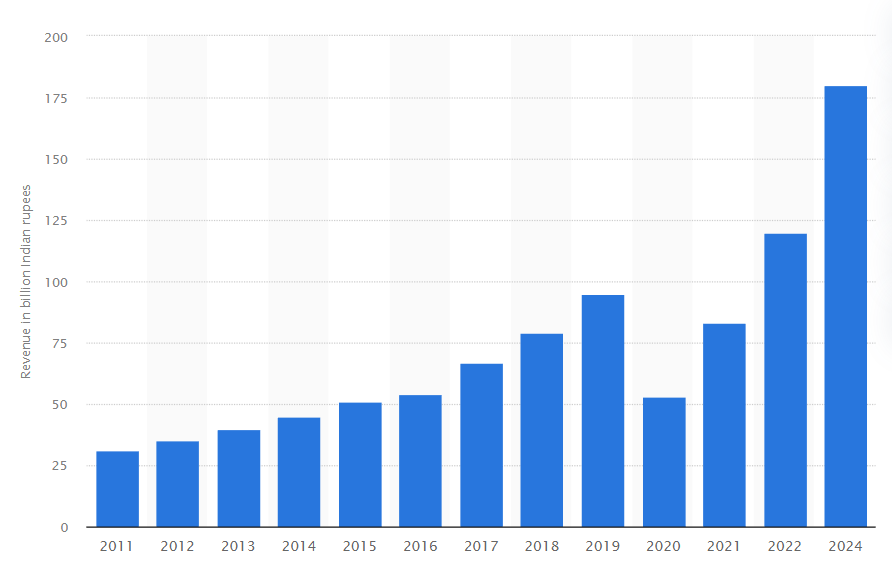

Women In Animation: Are They Making A Mark?
INTRODUCTION:
It is evident that women have contributed to the progress of every field. The proper people in their workforce contributed to the development of even the most prosperous businesses in the world. Your personnel must be evenly split between the Gender because this will promote diversity in your thinking, ideas, and decision-making.
Women play a big part in the animation industry. The imbalance of women in the animation industry is challenging and difficult to ignore even if it has reached new heights of success and achieved great strides in recent years. According to the source, the global animation market will be worth more than 391 billion US dollars in 2022, up 5% from 372.4 billion dollars the previous year.
The annual figure was expected to rise throughout the decade, eventually surpassing 587 billion dollars by 2030 (credit source: – www.statista.com). In the US and Europe, 60% of animation students are female, but as they enter the professional animation business, their numbers drop by 20% to 40%, according to a survey done by the advocacy group Women in Animation. The market size of India’s animation and VFX industry from 2011 to 2021, with estimates until 2024(in billion Indian rupees)


The market size of India’s animation and VFX industry | Credit: www.statista.com
Different Paths :
The history of the sector comes first. Women have always worked in animation, but historically, men have held more significant positions. This is mostly a result of the historical context and development of the industry. Women have actually done quite well over the past 20 years in terms of even obtaining any positions in the animation industry, especially in light of the fact that the entire industry has only been around for less than a century and that for years, they were systematically assigned to such “lesser” jobs as ink and paint.
The following typical employment motives are included in the “different route” theory. Some women are motivated by a fascination with children’s television, which features animation a lot. These individuals might equally well finish up in the publishing or teaching fields, where many of them started their careers. After initially pursuing a career in education, Geraldine Laybourne, who was previously president of Nickelodeon/Nick at Nite and is currently president of Disney/ABC Cable Networks, entered the media business with a keen interest in children’s programming.
Women in animation industry
Women’s contributions to the advancement of any industry are undeniable. Even the most successful companies in the world are successful because they have the right people on their teams. A gender balance in your workforce is essential because it will bring diversity to your thoughts, ideas, and decision-making processes.
When it comes to gender, you may be wondering who dominates the industry. Male or female? Unfortunately, there is still a gender imbalance in the industry. Men dominate the industry, accounting for 75% of the population, which is a major concern. According to statistics, 60% of students studying animation courses in various animation schools and institutes are female; however, why are men leading the industry? When this question was posed in 2018, the most common response was that most women lost interest in the field after finishing their studies, resulting in a significant drop in the number of women working in the animation industry.
The industry is brimming with creative women, and we must make a concerted effort to work with female talent, thereby assisting them in developing their distinct talents, voices, and experiences in the creative industry. However, once they get a foot in the door, their experiences are mostly positive and assured. It’s simply a matter of encouraging women to climb the corporate ladder and reach the top. There is a new ray of hope for women in the animation industry thanks to the initiatives of Animated Women, Free the Bid and WIA.
Trends are shifting in 2023, and the media is focusing on women in particular. It is already having a positive impact on the animation industry. Many female animators are being inspired by their female foremothers in the animation industry. Though males appear to have led the animation industry in the past, there were several female animators who worked very hard for the industry, and their contributions cannot be overlooked. They are an inspiration to today’s women, and their practices are still used to inspire new animators in various 2D animation studios.
So, what is the industry doing to address this issue?
Teal Triggs, associate dean of the RCA’s school of communication and current head of animation, is a vocal advocate for the gender issues confronting the animation industry, and she tells us that animation, like many creative industries, faces deep-seated challenges in equal gender representation. Women dominate animation courses, but the opposite is true in industry, and the reasons for this “are historical and frequently reflect personal circumstances, but also suggest an urgent need to review current industry practices,” she says.”This could involve looking into how partiality affects trying to interview processes, putting in place strong mentoring initiatives after graduation, and making people aware of gender and diversity on judging panels for festivals and awards.
As educators, we must collaborate with the animation industry to ensure that women have equal opportunities to contribute their distinct voices, experiences, and practices to animation and the creative industries.”
Women in Animation Who Set the Standard
Brenda Chapman
The history of women in animation is extensive, and the path Scott blazed for the female animators who followed her has inspired many to pursue careers in the industry. Brenda Chapman, who has also worked as an animator for Disney, is one of those women.
Chapman is one of the women in the animation industry who has made a name for herself and continues to do so while encouraging young girls to pursue their dreams.
Chapman has worked as an animator on a number of classic films. She began her career on Disney’s “The Little Mermaid,” and things only improved from there.
She received an Annie Award for her work on “The Lion King,” and she has an Oscar nomination for “Beauty and the Beast.”
She won an Oscar, a BAFTA, and a Golden Globe for her work on Pixar’s “Brave.” She was the first woman to win the Academy Award for Best Animated Feature.
She was also involved in the formation of DreamWorks Animation Studios. Without a doubt, Chapman is an inspiration to many women in animation who have big dreams, and she has some sound advice for those who want to break into the industry:
“Simply do it. Believe in yourself and strive for self-assurance. Draw. Work on your craft and your art. Instead of bullying or condescension, be passionate and open to collaboration. But, most importantly, embrace what makes your work unique, which is advice I give to anyone.”
CONCLUSION
It’s incredible to see more women in animation today. It is all thanks to those who paved the way when working as a female animator was nearly impossible. Many female animators today are attempting to encourage their peers to enter the animation industry. These women encourage others to step outside of their comfort zones and tell their stories to the world by using their own experiences of hardship and self-doubt to create animation projects that matter to them.
FAQ’S
Q. Is animation a viable career option for women?
Yes, if you have oodles of creativity, this is the right career path for you. To be a good animator, you must have a lot of zeal and imagination. You must be proficient in drawing and sketching.
Q. How many female animators are there?
Animators make up 28.1% of the workforce while men make up 71.9%.
Q. What is the outlook for the animation industry?
Between 2018 and 2023, the global animation market is expected to grow at a 4.79 per cent annual rate, reaching a market size of $404.83 billion. This expansion is the result of advanced technologies and better practices, which have also paved the way for the broader adoption of various types of animation.


Leave a Reply